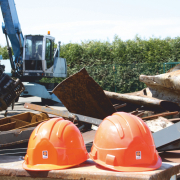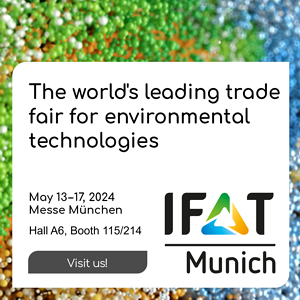BIR: Latest statistics indicate year-on-year crude steel production increase
Brussels – At the recently finished BIR World Recycling Convention in New Delhi Rolf Willeke, statistics advisor of the BIR Ferrous Division, summarised the main findings on world steel recycling in his January-June 2017 update presentation. Figures for the first six months of 2017 confirm an increase in global crude steel production of around 4.5 percent to 836 million tonnes compared with 800 million tonnes in the same period of 2016.
Statistics for January-June 2017 from worldsteel show a year-on-year crude steel production increase in China (+4.6 percent to 419.745 million tonnes), the EU-28 (+4.1 percent to 86.129 million tonnes), the USA (+1.3 percent to 40.591 million tonnes), Japan (+0.5 percent to 52.305 million tonnes), the Republic of Korea (+3.7 percent to 34.699 million tonnes), Russia (+0.8 percent to 35.34 million tonnes) and Turkey (+11.4 percent to 18.215 million tonnes).
Further increase in steel scrap usage
Regarding steel scrap usage, China was the world’s biggest steel scrap user in the first half of 2017; there was a steep increase in its scrap consumption of around 46 percent to 62.2 million tonnes compared with 42.6 million tonnes in the same period of last year. The first half of 2017 brought 4.8 percent growth in the EU-28’s steel scrap usage to 47.717 million tonnes. The biggest steel scrap users in the EU-28 were Italy (+5.8 percent to 10.986 million tonnes), Germany (+3.2 percent to 9.836 million tonnes), Spain (+6 percent to 5.844 million tonnes) and France (+3.3 percent to 3.766 million tonnes). Also on the increase in the January-June 2017 period was steel scrap usage for crude steel production in the USA (+1.3 percent to 23.8 million tonnes), Japan (+9 percent to 17.85 million tonnes), Turkey (+16 percent to 14.582 million tonnes) and Russia (+0.6 percent to 8.069 million tonnes).
Mainly positive developments in steel scrap imports
The first half of 2017 brought a 1.6 percent increase in Turkey’s overseas purchases of steel scrap to 9.327 million tonnes, thereby underlining its position as the world’s foremost importer. Over the same period, the Republic of Korea was the world’s second-largest steel scrap importer (+7.8 percent to 3.037 million tonnes). In the first six months of 2017, year-on-year import gains were also recorded by the USA (+26.5 percent to 2.501 million tonnes), China (+31.5 percent to 1.314 million tonnes), Mexico (+23 percent to 0.899 million tonnes), Indonesia (+52.5 percent to 0.723 million tonnes), Thailand (+22.3 percent to 0.658 million tonnes), Belarus (+24.1 percent to 0.655 million tonnes), Russia (+75 percent to 0.308 million tonnes) and Switzerland (+1.1 percent to 0.268 million tonnes).
Conversely, there was a further cut in India’s steel scrap imports of 31.8 percent to 2.575 million tonnes in the first half of 2017, costing the country its position as the world’s second-largest importer. Year-on-year import reductions were also recorded by Taiwan (-9.4 percent to 1.501 million tonnes), the EU-28 (-5.3 percent to 1.363 million tonnes) and Canada (-45.3 percent to 0.475 million tonnes).
Chinese imports and exports increased
Owing to its general market impact, China always attracts particular attention. Besides the strong growth in both its steel scrap usage and imports, there has also been an increase in its steel scrap exports – caused by the country’s elimination of its induction furnaces. Customs figures indicate that China shipped out 298,106 tonnes of steel scrap in the first six months of this year; the biggest buyers were Taiwan on 96,398 tonnes, Indonesia on 48,695 tonnes, Hong Kong on 46,781 tonnes, Vietnam on 28,975 tonnes and India on 27,634 tonnes. New custom figures show that China has shipped out 879,663 tonnes from January to August 2017 as compared to 298,106 tonnes from January to June 2017 (an increase of around 195 percent).
EU-28 remains the leading steel scrap exporter
In the first half of 2017, the EU-28 continued in its role as the world’s leading steel scrap exporter following an increase in its overseas shipments of 15.8 percent to 9.961 million tonnes, with the main buyers being Turkey (+19.5 percent to 5.975 million tonnes), Pakistan (-6.4 percent to 0.718 million tonnes), the USA (+31.5 percent to 0.651 million tonnes), Egypt (+118.5 percent to 0.614 million tonnes), India (-42 percent to 0.56 million tonnes), Switzerland (+3.8 percent to 0.27 million tonnes) and China (+14.6 percent to 0.22 million tonnes). Statistics covering external steel scrap exports for the January-June 2017 period show the dominant position of the UK as the EU-28’s biggest steel scrap exporter (+12 percent to 3.447 million tonnes).
The EU-28’s internal steel scrap exports totalled 14.515 million tonnes in the first half of 2017 (+7.4 percent when compared to the same period of 2016). An upturn was also apparent in US overseas steel scrap shipments in this year’s first half (+14 percent to 6.728 million tonnes), with the leading buyers being Turkey (-9.6 percent to 1.342 million tonnes), Mexico (+30.1 percent to 0.907 million tonnes), Taiwan (+31.1 percent to 0.785 million tonnes), China (+97.4 percent to 0.539 million tonnes), Canada (+19.8 percent to 0.459 million tonnes), India (-45.7 percent to 0.367 million tonnes) and Pakistan (+46.7 percent to 0.333 million tonnes). Meanwhile, increases in overseas shipments were also recorded in the first six months of 2017 by Canada (+26.5 percent to 2.141 million tonnes), Australia (+24.4 percent to 0.908 million tonnes) and Singapore (+3 percent to 0.411 million tonnes).
Conversely, there was a decline in Japan’s overseas shipments of steel scrap in January-June this year (-16.1 percent to 4.002 million tonnes) despite a substantial year-on-year increase in its deliveries to the Republic of Korea (+14.2 percent to 2.014 million tonnes) and to China (+3 percent to 0.898 million tonnes). There was a slump in purchases by Vietnam (-46.6 percent to 0.639 million tonnes) and Taiwan (-58.7 percent to 0.253 million tonnes). Lower overseas scrap shipments were also recorded in the first half of 2017 by Russia (-21.6 percent to 2.147 million tonnes) and Hong Kong (-2.9 percent to 0.644 million tonnes).







